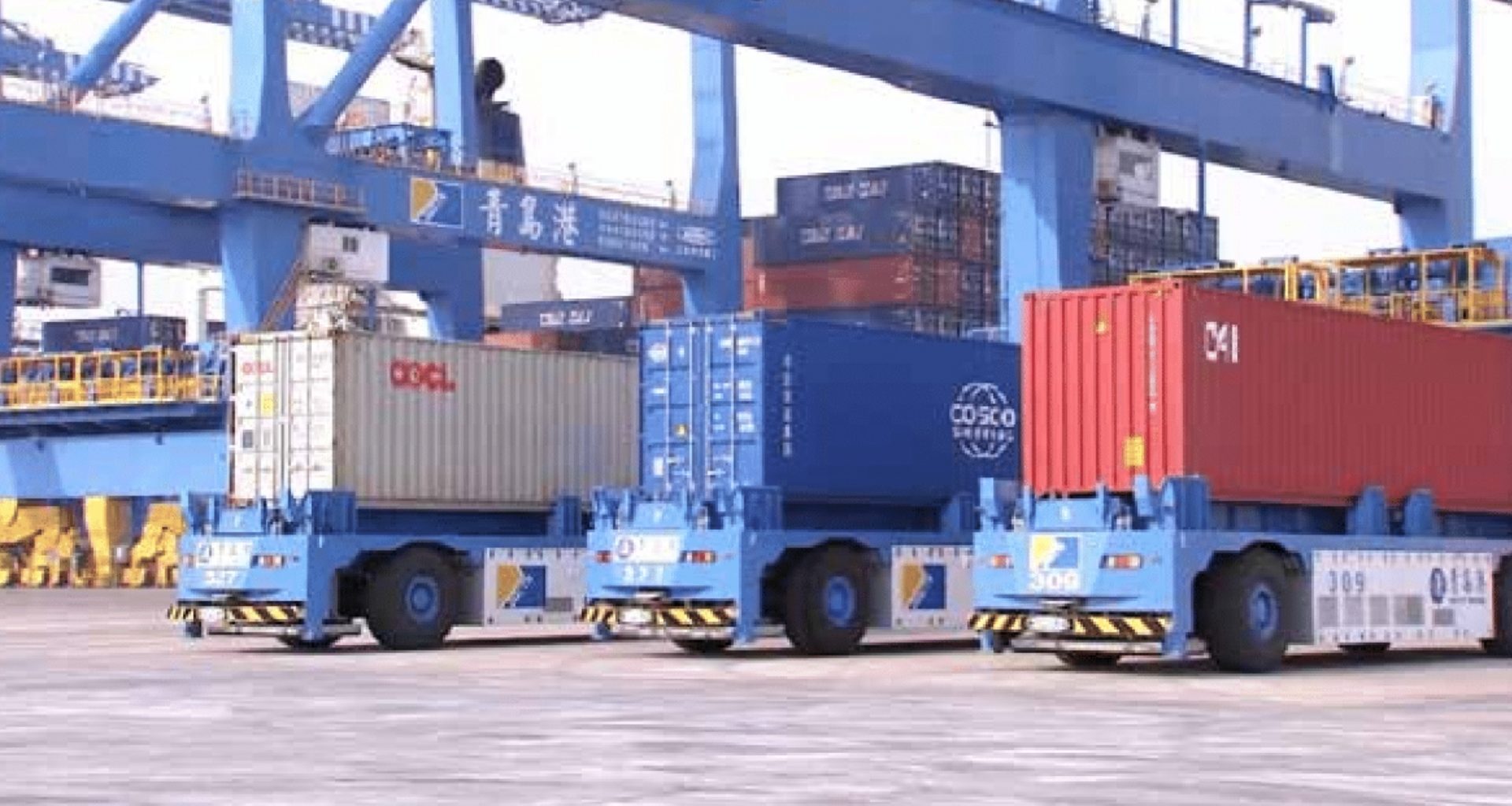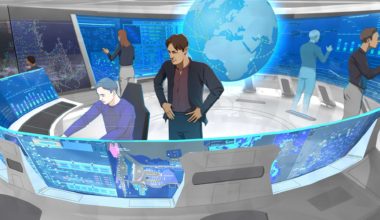We pick up where we left off last month in this two-part series exploring emerging technologies that are starting to shape, or have a high probability of shaping, the future of our industry. If you haven’t read Part 1 on the emerging technologies that are worth keeping your eyes on, it’s worth doubling back, but this article can be read as a standalone. Part 2 focuses on the strategic trends that are also working to shape the conversation around technology in the maritime sector.
Table of Contents
WHY ADD TRENDS?
What we learned in 2019 was influenced by our work on 2038: A Smart Port Story. Throughout 2019, we brought out Parts 2 and 3 of 2038, and it was in these parts that we had the unique ability to move beyond just talking about technology to really exploring its impact on humans, society, and the interaction between them. It’s in these broader social and strategic trends that we also see a true ability for our industry to shape, and be shaped by, technology as a possible solution to challenges familiar and new.
STRATEGIC TRENDS
There are three strategic technology trends that are worth retaining a focus on in 2020: ecosystems, data standards, and the rise of APIs. None of these items should come as a surprise, but they are all worth a quick recap.
ECOSYSTEMS
If 2018 was the year of blockchain in the port industry, 2019 was most certainly the year of the Port Community System (PCS). As an example, PCSs are one example of two ecosystem trends that are worth pointing out, but first, let’s define ecosystem. The dictionary defines an ecosystem as a group of interconnected and interacting parts.
The first ecosystem trend to note is the rise of the interconnection of the physical port environments (i.e., if you physically work at a port, you connect your IT systems to the broader network). Many PCSs are leveraging the ecosystem approach to collect and share data, leading to improved overall ecosystem efficiency. This, by all accounts, is a good outcome.
The second ecosystem trend that is propelling technology conversations forward is models emerging from some of the major technology providers that are painting a picture of a single-technology ecosystem. Again, in principle, this sounds like a great outcome. However, it’s worth taking a small science detour.
Let’s start by noting that the definition of an ecosystem doesn’t indicate that an ecosystem is good or bad – just that it is. This should be our starting point in understanding the trend. Remember, our natural environment is an ecosystem, and it includes many things that are harmful, like viruses and volcanos (we hope it is a coincidence that they both start with a V). Science tells us that an ecosystem that isn’t balanced, one that provides an overly favorable environment for any single part, tends to lead to a bad outcome whereby that single part eventually disrupts the ecosystem in a negative way.
Science lesson finished. That brings us back to the proposed technology ecosystems. If they are proprietary systems designed to give a single vendor greater influence, then we’d argue that these are, in fact, not a good thing. But, if designed well, where all parts, all vendors, terminal operators, ports, etc., have a shared input and can gain a comparable benefit, then these technology ecosystems could be the solution we so desperately need to address the data-exchange challenges facing our industry.
DATA STANDARDS
We have seen a lot of movement on data standards throughout 2019, with many positive initiatives taking place and several processes evolving simultaneously to define a data standard for the industry actively. Each is focusing on distinct aspects of maritime and terminal operations. At TOC Europe 2019, we heard an update on TIC 4.0, the PEMA data standard initiative working to define hardware equipment standards. We have also seen regular updates throughout the year on the Port Collaborative Decision Making (PortCDM) initiative, which is more focused on the vessel and port side of the equation. Yet perhaps most excitingly, 2019 marked the emergence of the Digital Container Shipping Association, and based on multiple presentations from them throughout the year, it is probable they’ve got the ability to consolidate and coordinate the standards conversation.
Movement toward a data standard in maritime is great, but there are questions and risks that we should be closely considering now. Will competing frameworks for standards be able to merge into a single comprehensive framework? Do they need to? Are we inviting all players to the table to help flesh out these standards?
Data standards are one thing, but sharing is another.
In 2038: A Smart Port Story, we predicted that in the early 2020s, there would be a “Data War.” “During the Data War of 2020, companies battled one another over control of information – no one wanted to share – data was seen as a commodity as opposed to an enabler of innovation.” There are some early signs we’re headed down this route, but there are also some early signs we’re forging a different path, too. The emergence of PCSs in 2019 has truly shifted data sharing and collaboration to the forefront of maritime, and this is a good thing. We are seeing some progressive models emerge in pockets around data ownership, data security, and collaboration. Yet we are still seeing many players choosing not to collaborate and to withhold access.
RISE OF THE API
If API is a new term for you, you should become more familiar with it. Let’s start by defining it. An API, or application program interface, is defined as a set of functions and procedures allowing the creation of applications that access the features or data of an operating system, application, or other services. The idea is cleverly simple. Essentially, there is a set of out-of-the-box “interfaces” to interact with a system – to request and deposit data. They are easy and cost-effective to integrate and are standards-based.

In short, a software vendor writes an API for interacting with their software system. As an example, TOS provider X writes an API for retrieving a list of outbound containers. Port Y can query that API for a current list of outbound containers as needed. APIs can work as a one-way or two-way interface, serving and receiving data.
APIs rose to prominence in the early 2000s, when they began being implemented in web projects, but in fact they’ve existed since the 1970s. We are going to make a prediction and say that APIs are the future of data exchange and should be replacing costly, bespoke interfaces wherever and whenever possible. The rise of the API should help to address many of the challenges we see around data exchange.
CLOSING THOUGHTS – TECHNOLOGY AND MILLENNIALS MATTER
We closed our first edition of this tech talk by drawing attention to why millennials matter, and we’re going to do the same again this year. At TOC Europe 2019, we brought the industry’s first entirely millennial-focused panel to the global stage, and while they shared some of the opinions of their Baby Boomer counterparts in the industry, they did diverge on several. We are also excited to say that we will be bringing the Millennials in Maritime session back to TOC Europe as well as expanding its scope.
In short, millennials’ comfort level with technology saw them being more favorable toward technology-based solutions to many of the challenges facing our industry. They also seem far more supportive of fully automated environments and the idea that our traditional jobs in ports were shifting away from manual labor and toward technical roles, something our industry desperately needs to embrace sooner than later. You can read a comprehensive overview of the sessions insights in our six-part series on the INFORM blog.
How we attract and retain technology-savvy millennial workers over the next decade will shape our industry well past that horizon. The steps we take today have real impacts on our ability to compete in the future, and involving millennials in those conversations is not just wise; we would argue it is fundamental.


